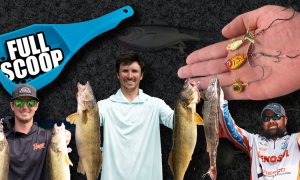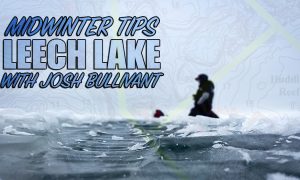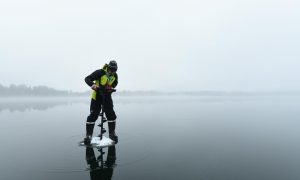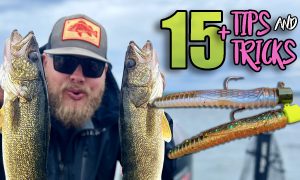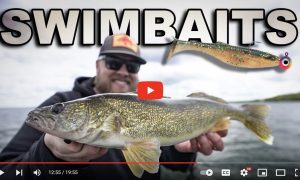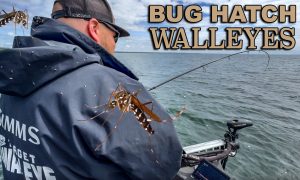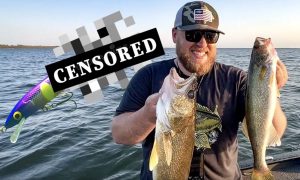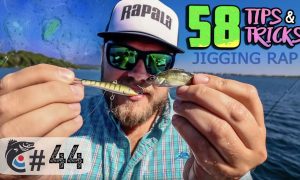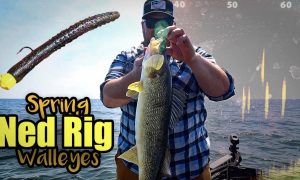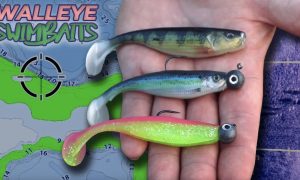by Will Stolski
Of course walleyes tend to be most active during low-light periods (sunrise or sunset), but you can still catch ‘em during the middle of the day if you’re willing to change up your tactics and locations….
Clayton Schick is one of those ice-nuts who stays on ‘em all day long. He chases (and catches) some of the biggest ‘eyes across the ice belt — one look at his YouTube channel and you’ll see what we’re talkin’ about!
We tracked him down to find out what he does differently to stay on fish of THIS caliber all day:
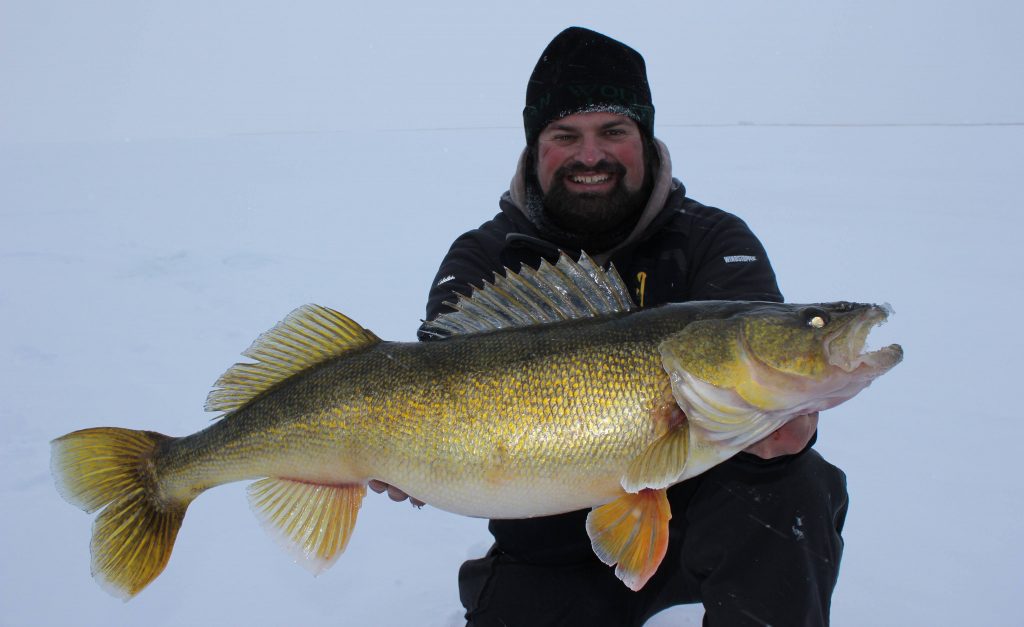
> Clayton: “I basically break down fish into two different categories: 1) active, and 2) passive fish…and tailor my strategy based on the time of day.”
1. Active Fish
Structure:
> “First and last light are generally when walleyes go into feeding mode and will be the most aggressive.
> “I’m looking at areas that set-up as feeding zones…gradual transitions (18-25’) with a sand or mud bottom that have access to deep water.
> “One of the biggest keys to my success is getting away from other anglers — I’d rather fish a less desirable area than compete with other anglers for the same pod of fish.
> “I don’t drill a ton of holes, usually 9-12 that are about 5’ apart from each other in a grid. During prime feeding times, you want your bait in the water as much as possible.”
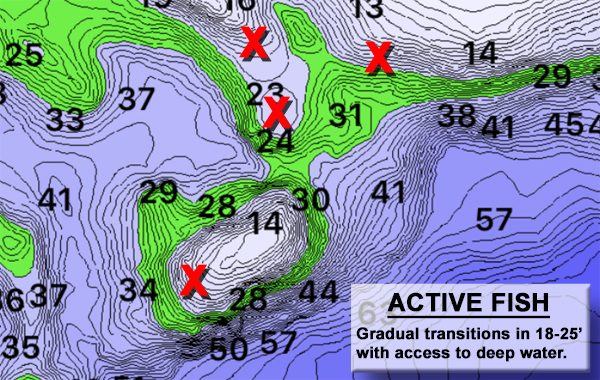
Baits:
> “Always start with an aggressive bait during prime time…my go-to is either a flutter spoon or rattlebait.
> “For spoons: I like the 1/4-oz Northland Buck-Shot Flutter Spoon. It has a wide wobble that covers water, and a rattle which a lot of other flutter spoons don’t have.
> “I rarely tip my flutter spoons with anything…it changes the action of the bait.
> “An aggressive jigging cadence is key to attract fish into the strike-zone…I make 1-3’ strokes and let the bait fall to the bottom, causing some sediment disturbance.
> “One of the biggest mistakes anglers make is changing their cadence when they start to mark a fish. If a fish came into an aggressive cadence, I keep it exactly the same unless the fish starts to shy away.”
2. Passive Fish
Structure:
> “After the first-light window is done, I’ll pack up and make a move. For the mid-day bite, I look for areas that serve as travel lanes for fish.
> “Areas with steeper breaks and rock-to-sand transitions — close to feeding zones — are my favorite. Since fish are traveling along these areas, you have to jump around a bit more and hole-hop.
> “I’ll drill down the breakline and fish each hole for 10-15 minutes before moving onto the next if I don’t mark anything.”
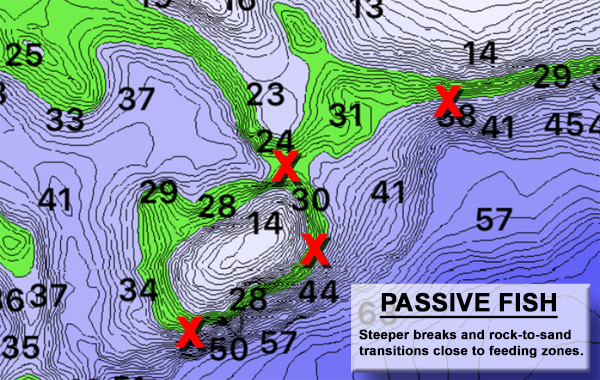
Baits:
> “I move away from aggressive stuff to a Northland Buck-Shot Spoon or something similar, still in the 1/4-oz size.
> “I do tip these with a minnow head…sometimes that extra scent is needed to get lethargic fish to eat.
> “I only downsize spoons if I really have to…just feel more confident in larger profile baits for the fish that I’m after.”
[If you’re into big fish (duh, who isn’t?!) Clayton’s YouTube channel is for sure worth a sub. Here’s one of many where he stays on ’em from sunrise to sunset]:

